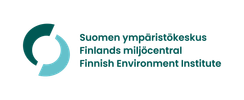Status assessment of the marine environment: minor improvements in the state of sea areas in Finland, overall picture remains poor
Finnish Environment Institute, Ministry of the Environment and Southwest Finland Centre for Economic Development, Transport and the Environment report about a new online publication:
The status of the Baltic Sea remains predominantly poor. The effects of eutrophication in all sea areas disrupt biodiversity and the functioning of the food network. However, the harmful development may be reversing. Although the change is not substantial from the previous status assessment published in 2018, longer-term monitoring indicates a slight improvement.

The status of the Finnish marine environment has been assessed by means of an extensive expert network led by the Finnish Environment Institute. The status assessment is based on scientific and verified results. The information gathered from monitoring the sea area from 2017 to 2022, using more than 100 marine resources management indicators, has been employed as data. The indicators can be used to assess the state of Finland’s marine areas. Some of them have been monitored for decades, but some are newer.
Conservation measures can improve marine life
In the assessment of the status of the Baltic Sea, the diversity of marine nature is examined through the study of marine mammals, birds, fish, plankton communities, seabed habitats and food network. Due to eutrophication and many other anthropogenic disturbances, marine life is under constraint. There has been an increase in the prevalence of plant and animal species that thrive in eutrophic conditions in both seabed and open sea ecosystems. On average, marine life is in a better state in the Gulf of Bothnia than in Finnish sea areas further south. This improvement is evident in the development of grey seal, fish and certain seabird populations.
“Protection measures can improve or restore marine life when properly targeted and implemented to a sufficient extent. This can be seen, for example, in the positive effects of fishing restrictions on the Archipelago Sea pikeperch population, or the benefits resulting from the elimination of alien predators for the fledgling production of seabird populations”, the status assessment coordinator, research manager Samuli Korpinen from the Finnish Environment Institute summarises.
Eutrophication and human activity are the main reasons for the poor state of the Baltic Sea
The main factors contributing to the worsening state of the Baltic Sea are human activities at sea and on the shore, as well as the excessive nutrients flowing in from the catchment area. Maritime transport and fishing are the main activities that weaken the state of the sea. The poor condition of marine nature can be attributed primarily to construction projects near the shore, dredging operations, as well as boating and the related structures. Efforts have been made to reduce the loading from land for a long time, but the measures have not been sufficiently effective and nutrient loading is still the biggest problem in the Baltic Sea. However, it has not increased in any sea area and there has been a widespread decrease in point source pollution. Nutrients previously released into the sea as a result of human activities, or so-called internal nutrient storages, maintain the eutrophic state of the sea particularIy in the Gulf of Finland and the Archipelago Sea.
The number of alien species in Finland has increased, and many invasive alien species are distributed across the entire Finnish sea area. While marine litter is particularly visible on the shores of the Gulf of Finland, the Archipelago Sea and the Bay of Bothnia, the amount of litter on the shores has decreased during the monitoring period. Underwater noise in the Gulf of Finland contributes to the poor state of the sea, and noise from shipping has increased over the past 10 years.
Other problems include alien species, littering and underwater noise
The number of alien species in Finland has increased, and many invasive alien species are distributed across the entire Finnish sea area. While marine litter is particularly visible on the shores of the Gulf of Finland, the Archipelago Sea and the Bay of Bothnia, the amount of litter on the shores has decreased during the monitoring period. Underwater noise in the Gulf of Finland contributes to the poor state of the sea, and noise from shipping has increased over the past 10 years.
Aiming at achieving a good status for the marine environment
Although there are no major changes in the status assessments between 2018 and 2024, longer-term monitoring has revealed improvements in various aspects of the sea’s condition. In particular, the status of coastal benthic fauna, environmental toxins and shore litter show positive changes when looking at sea monitoring data from a longer period. The marine status assessment is a knowledge base for measures to improve the state of the sea. The new measures will be completed in 2027.
The status assessment of Finland’s Marine Strategy was last carried out in 2018. Unlike previous report-based status assessments, this time the material has been presented as a website, making it easier for readers to discover themes that are more interesting to them. In addition, it is possible to access material that offers in-depth insights and background information on the current status and objectives. The full status assessment can be found at ymparisto.fi: Suomen meriympäristön tila 2024 (Status of the Finnish marine environment 2024) [link in Finnish only].
Further information
Contact person at the Finnish Environment Institute:
Samuli Korpinen
samuli.korpinen@syke.fi
Tel. +358 40 661 8977
Contact person at the Ministry of the Environment:
Jan Ekebom
jan.ekebom@gov.fi
Tel. +358 50 435 1286
Contact person at the Centre for Economic Development, Transport and the Environment: Janne Suomela
janne.suomela@ely-keskus.fi
Tel. +358 40 769 9072
Publication details
Online publication in Finnish: Meriympäristön tila 2024 (Status of the marine environment 2024)
Online publication in Swedish: Havsmiljöns tillstånd i Finland 2024
Keywords
Contacts
Media service at Finnish Environment Institute
Our Media Service provides information on research, helps journalists find experts for interviews and provides photos for media use.
Our Communication experts will answer your inquiries on weekdays from 9 am to 4 pm.
Finnish Environment Institute - We build hope through research.
Finnish Environment Institute
Latokartanonkaari 11
00790 Helsinki
+358 295 251 000
It is time to move beyond solving environmental problems one by one, to systemic sustainability transformations. The Finnish Environment Institute (Syke) contributes to building a sustainable society through research, information and services. The Finnish Environment Institute is a research institute with 700 experts and researchers located in Helsinki, Oulu, Jyväskylä and Joensuu.

Subscribe to releases from Suomen ympäristökeskus
Subscribe to all the latest releases from Suomen ympäristökeskus by registering your e-mail address below. You can unsubscribe at any time.
Latest releases from Suomen ympäristökeskus
Kommunernas utsläpp fortsätter minska – trafikens andel av utsläppen ökar16.12.2025 06:00:00 EET | Pressmeddelande
Enligt förhandsberäkningsuppgifterna för 2024 minskade Finlands växthusgasutsläpp enligt Hinku-beräkningsreglerna med cirka fem procent jämfört med föregående år. På lång sikt har utsläppen sedan år 2005 minskat med 40 procent och jämfört med år 1990 med 43 procent.
Kuntien päästöt laskevat edelleen – liikenteen osuus päästöistä kasvaa16.12.2025 06:00:00 EET | Tiedote
Vuoden 2024 ennakkolaskentatietojen perusteella Hinku-laskentasääntöjen mukaiset Suomen kasvihuonekaasupäästöt laskivat noin viisi prosenttia edelliseen vuoteen verrattuna. Pitkällä aikavälillä vuodesta 2005 lähtien päästöt ovat vähentyneet 40 prosenttia ja vuoteen 1990 verrattuna 43 prosenttia.
Viikkokatsaus 15.–19.12.202511.12.2025 12:59:58 EET | Tiedote
Hei! Tässä tiedoksesi meillä Suomen ympäristökeskuksessa ensi viikolla ilmestyviä tiedotteita, uutisia, kampanjoita, blogeja ja uutiskirjeitä. Mukana myös tulevia tapahtumia ja webinaareja. Jakelemme viikkokatsauksen torstaisin STT:n kautta. Koosteet löytyvät myös STT-uutishuoneesta, josta voit tilata kaikki Suomen ympäristökeskuksen tiedotteet.
Viikkokatsaus 8.–12.12.20254.12.2025 12:30:18 EET | Tiedote
Hei! Tässä tiedoksesi meillä Suomen ympäristökeskuksessa ensi viikolla ilmestyviä tiedotteita, uutisia, kampanjoita, blogeja ja uutiskirjeitä. Mukana myös tulevia tapahtumia ja webinaareja. Jakelemme viikkokatsauksen torstaisin STT:n kautta. Koosteet löytyvät myös STT-uutishuoneesta, josta voit tilata kaikki Suomen ympäristökeskuksen tiedotteet.
Fisk och kilowattimmar kan förenas i Kymmene älv3.12.2025 08:53:17 EET | Pressmeddelande
Vandringsfiskens livsmiljöer kan förbättras genom smarta flödesläsningar utan betydande förluster för energiproduktionen.
In our pressroom you can read all our latest releases, find our press contacts, images, documents and other relevant information about us.
Visit our pressroom